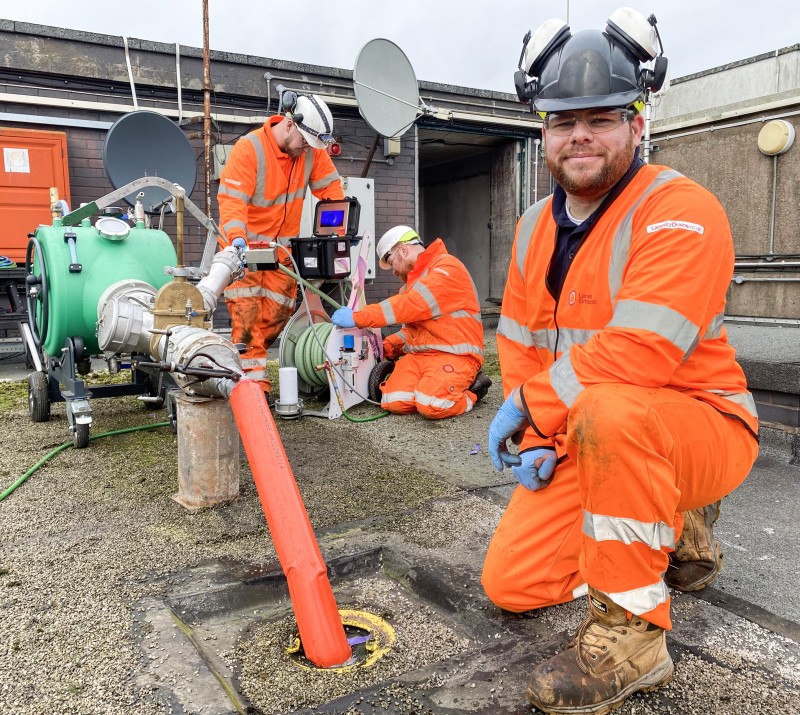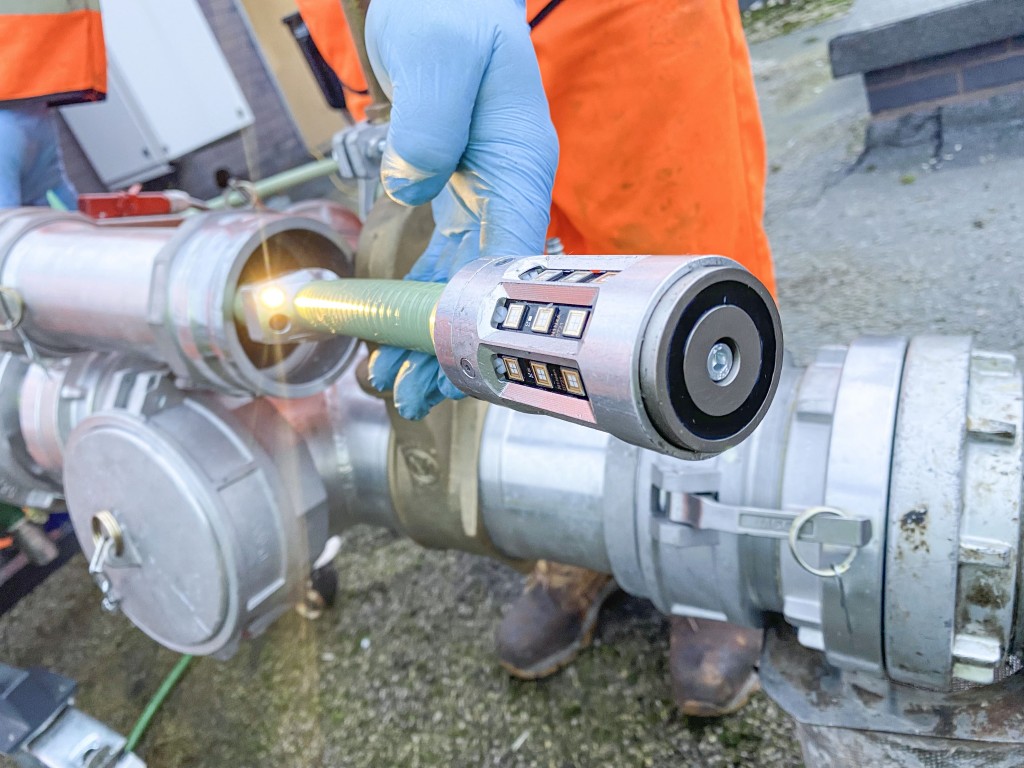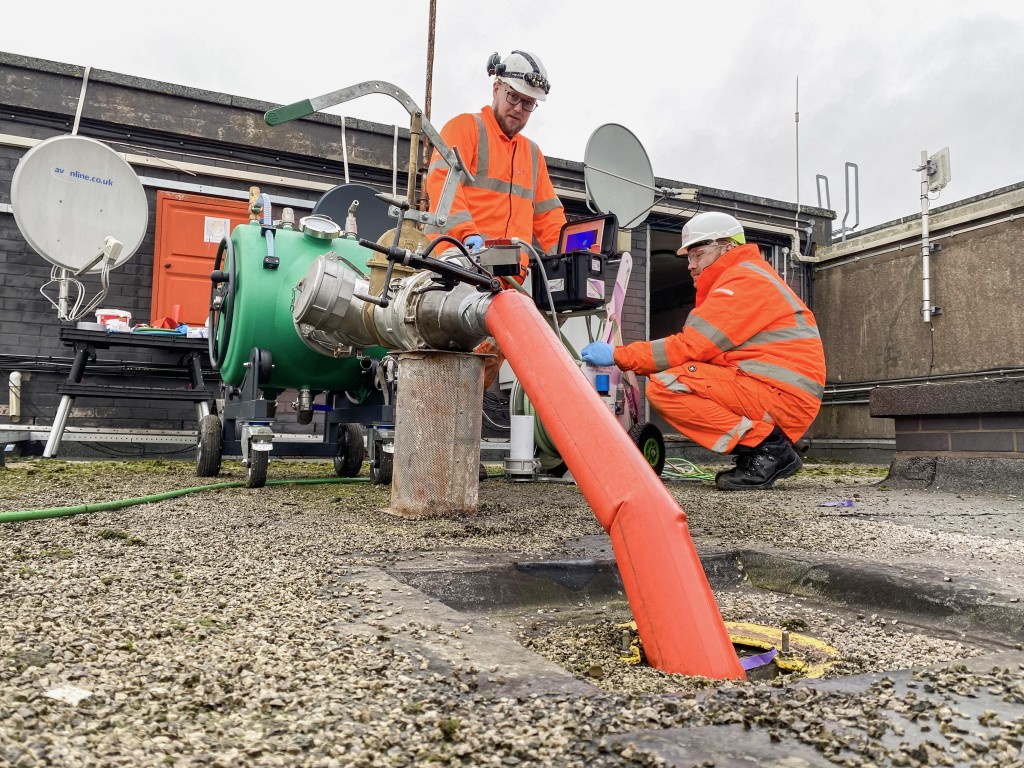Lining system a ‘game-changer’ in battle with high-rise damp

One of the UK’s leading drainage and wastewater specialists is promising to transform the rehabilitation of vertical drainage stacks in high-rise buildings with a revolutionary LED pipe lining system.
Lanes Group plc has proven it can significantly speed up the previously difficult process of lining both rainwater and foul stack pipes, with less disruption, using far less energy and creating less material waste.
The company has become the first contractor in the UK to line tall building drain stacks using the Brawo Magnavity LED light cured in place pipe (CIPP) system supplied by trenchless technology specialist S1E.
The system makes lining drains in high-rise buildings much easier and more sustainable, just at a time when problems caused by faulty drainage systems are becoming a maintenance priority for social housing landlords.
Mark Scott, Manager of the Lanes Birmingham depot, which is leading the company’s investment in the Brawo Magnavity technology, said: “Stack repair has been a challenging problem in high-rise buildings for years.
“This technology is a game-changer. It means stacks can be lined more quickly, cost-effectively and to a consistently high quality standard. So, landlords can be confident a significant maintenance headache can be resolved effectively for the first time.”
Lanes is lining stacks on high-rise blocks of flats for a main contractor working for a West Midlands council. The results have been so successful that more blocks are being added to the programme.
The process involves inserting a resin-impregnated flexible felt liner, often with a polyurethane or polypropylene coating, into a pipe. The resin then cures to create a tough, waterproof pipe-within-a-pipe, eliminating defects.

The Brawo Magnavity system uses LED light to cure the resin. Its LED light array is combined with a powerful electric magnet that holds the lights in place as the liner is inverted into the pipe with compressed air.
Once the liner is in place, the light pack, with its 96 UV LED lights, detaches from the magnet and cures the resin at a speed of up to 0.6 meters a minute as it is pulled back through the pipe.
Because the magnet guides the liner so effectively through the pipe, it can negotiate multiple bends, up to 90 degrees, something other CIPP systems fail or struggle to do.
The specialist 3D liners used by Lanes are flexible so accommodate the 70mm to 100mm changes in diameter in the stack pipes being lined.
The system, which can also be used on horizontal pipe systems, also allows liners to be ‘blind shot’ into pipes from a single chamber, rather than between two chambers.
The advanced low-odour resin developed by Brawo is stable until exposed to UV light, giving the Lanes lining team all the time it needs to prepare the liner for curing. By contrast, ambient cure liners must be inserted in a specified time before the resin starts to harden.

Lanes is able to install and cure each of the 47-metre-long stack liners for its West Midland client in around two hours.
Mark Scott said: “The same task would be impossible with hot water CIPP due to the weight of the water in the liner, and would be risky with ambient cure CIPP because of the unpredictability of curing times, and the production of toxic vapours during the process.”







